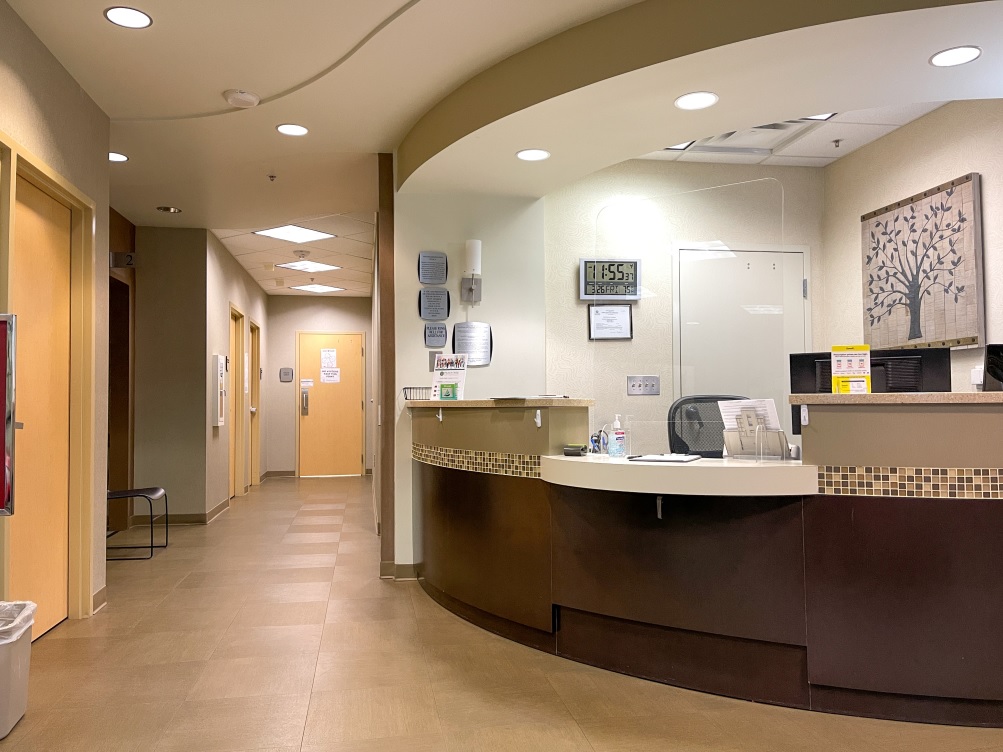Everyone who uses contract janitorial services expects their facility to receive a quality clean. However, when it comes to cleaning, not all workplaces are created equal. A medical office clean, for instance, requires a higher level of cleanliness and sanitation that goes beyond what you might expect in a regular office.
Let’s explore the key differences that set a medical office clean apart from regular office cleaning.
1. The Stakes Are Higher in Medical Offices
First and foremost, the stakes are higher when it comes to cleanliness in a medical office. Regular offices are spaces for paperwork, meetings, and computer work. Office cleaning involves general offices, meeting rooms and halls. However, medical office cleaning involves cleaning emergency rooms, exam rooms, patient rooms, and rooms where X-rays and MRIs are done. Medical offices are where people come to seek medical care and treatment. In both environments, it’s important to focus on patient safety and preventing the spread of illness. However, medical office cleaning takes this to the next level.
2. Infection Control Takes Center Stage
In a medical office clean, preventing the spread of infections is a top priority. Medical professionals are dealing with patients who may have compromised immune systems or are already ill. This means that every surface, from waiting room chairs to examination tables, needs to be thoroughly disinfected every service in order to minimize the risk of spreading germs. While germ killing is important in regular office cleaning, the frequency and specifications of service differ.
3. Specialized Cleaning Products Are a Must
While regular office cleaning often involves basic cleaning agents like all-purpose cleaners and window sprays, in most of the general office areas, medical office cleaning requires specialized cleaning products throughout. These products are designed to kill bacteria, viruses, and other pathogens effectively. This is especially true in all patient areas where you’ll find hospital-grade disinfectants and cleaners in use.
4. The Importance of Medical Waste Management
Medical offices generate hazardous waste, such as used needles and contaminated materials, that require special handling and disposal. Proper waste management is crucial in medical settings to protect both staff and the environment. Regular offices don’t typically deal with this level of hazardous waste.
5. Detailed Cleaning Protocols Are Standard
Cleaning in a medical office involves detailed protocols that cover everything from the waiting room to the examination rooms. For this reason, each surface is meticulously cleaned and disinfected according to a set schedule to ensure that no area is overlooked. These protocols are much more stringent than what you’d find in a regular office environment.
6. Compliance with Health Regulations
Medical offices must adhere to strict health regulations and guidelines set by health authorities. In particular, these regulations dictate everything from how medical waste is disposed of to the cleanliness of patient examination areas to the cleaning products themselves. Compliance is not an option; it’s a legal and ethical obligation. In contrast, regular offices don’t have such stringent regulations to follow.
7. Detailed Cleaning Logs
Medical offices maintain detailed cleaning logs that document when and how each area was cleaned and disinfected. These records are crucial for infection control and regulatory compliance. The log may also include a list of all personnel who were cleaning on each shift for security reasons. Regular office cleaning may not require such meticulous documentation.
8. Dealing with Biohazard Spills
Undoubtedly, in medical offices, spills of bodily fluids or other biohazardous materials are common. Cleaning up these spills requires specialized training and equipment to ensure safe and proper cleanup and disposal. Regular offices rarely encounter such situations.
9. The Importance of Training and Certification
Cleaning staff in medical offices often receive specialized training and certification in healthcare cleaning. They learn how to clean and disinfect in a way that meets legal healthcare standards. In regular offices, general cleaning knowledge is usually sufficient.
10. Exposure Control Plan
It’s important to recognize that cleaning staff may be exposed to hazardous waste when servicing a medical facility. This is why a professional cleaning service will have a good Exposure Control Plan to handle this sort of situation properly.
With this in mind, here are some aspects to exposure control that medical office cleaning experts know:
- Using Personal Protective Equipment (PPE) like gloves and eye protection will help to protect the cleaner and reduce hazardous exposure.
- The procedure for handling disposal containers and other regulated waste.
- The procedure for handling contaminated sharps.
- Proper labeling methods to avoid mix-ups and the ability to distinguish between specimens, contaminated items, biohazard items, etc.
- The correct procedure for post-exposure evaluation and follow-up.
In conclusion, a medical office clean is a specialized field that goes beyond the regular office cleaning you might be familiar with. The emphasis on infection control, the use of specialized cleaning products, adherence to strict health regulations, and the need for protecting patient privacy all make medical office cleaning a unique and critical aspect of healthcare delivery. The stakes are higher in medical offices, and the cleaning standards reflect that.


